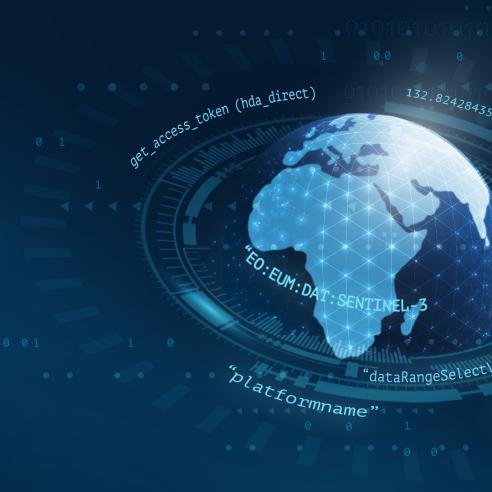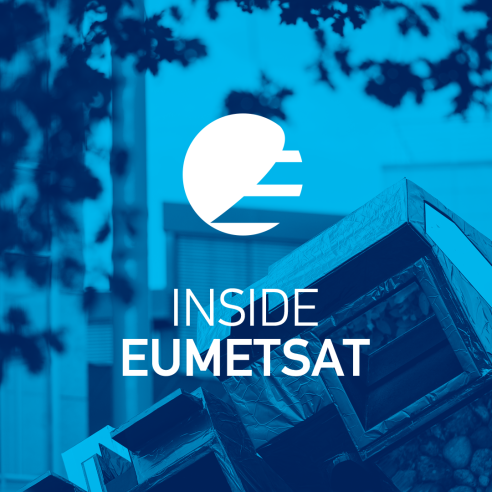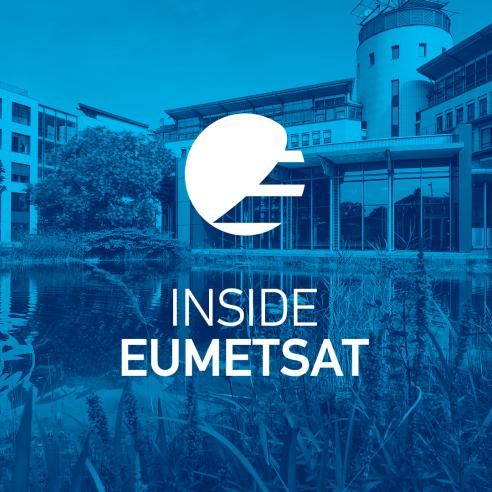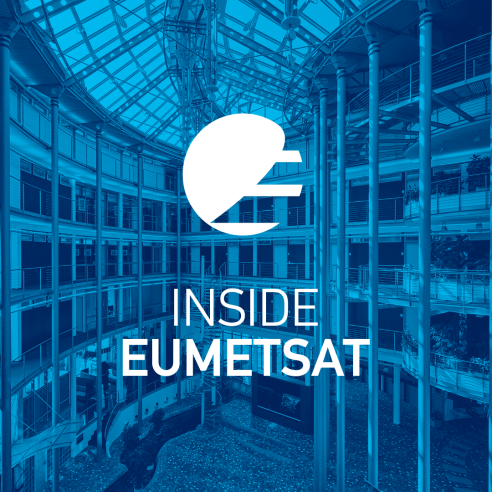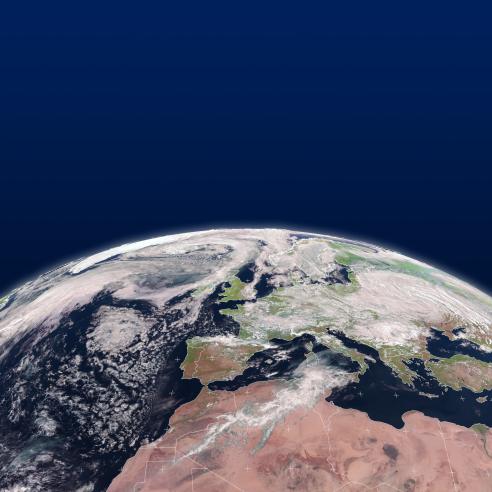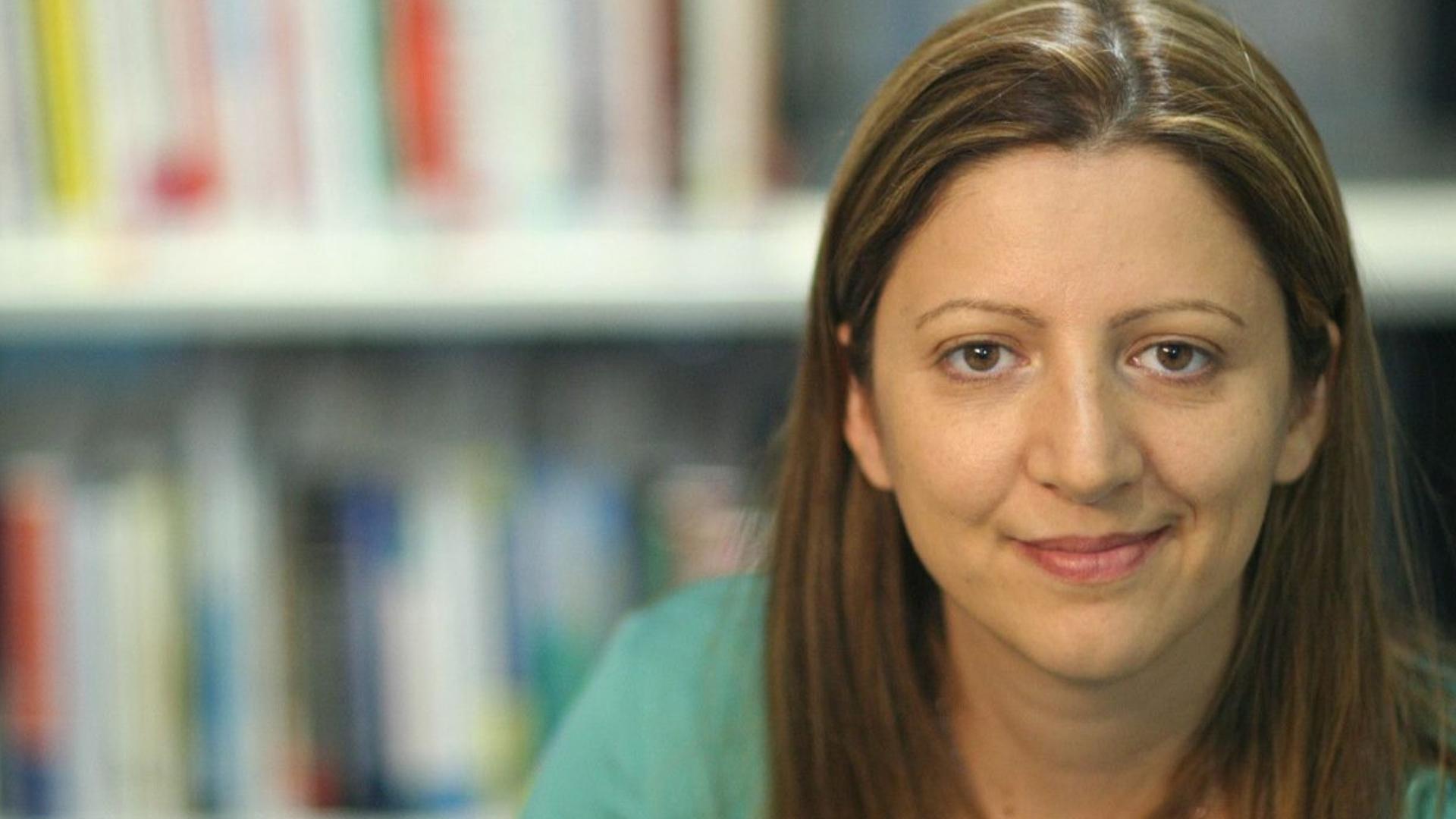
Exploring data services at EUMETSAT
We talked (part remotely/part at HQ) with Joana Miguens about her interesting role, continuing our Inside EUMETSAT series.

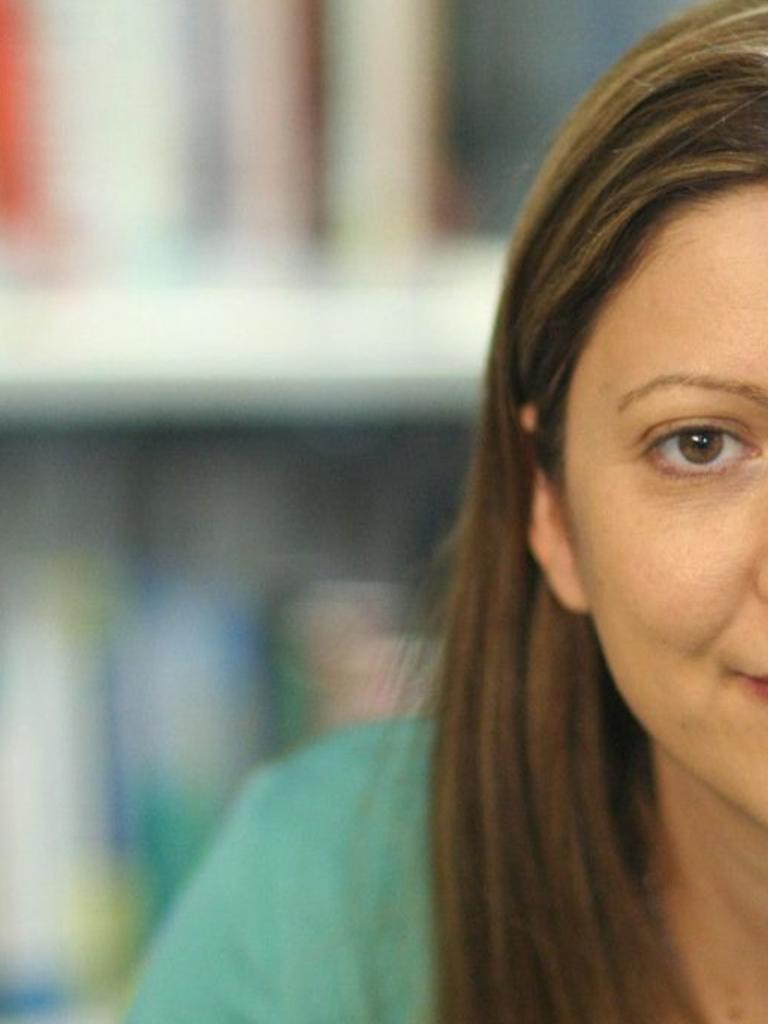
Read on to hear more about Joana’s daily tasks and what she likes to get up to in her spare time!
27 January 2021
22 September 2020

Can you tell us a bit about your role?
My daily tasks are very much involved with data services and system evolution. Currently, I am working as “Copernicus Data Services System Architect”, predominantly on the WEkEO platform and other related projects. WEkEO DIAS (Data and Information Access Services) is part of the ambitious Copernicus programme.
When I joined EUMETSAT, our team was planning the evolution of the Multi-Mission Dissemination System and EUMETCast (EUMETSAT’s primary dissemination system) to accommodate the increase of Sentinel-3 and Metop-C satellite data. At that time, the volume increase was very steep and major changes were happening—it was easy to get enthusiastic about the role when faced with these challenges.
Currently, you can find me doing a diverse range of day-to-day tasks, some of which can be very hands on or involve activities such as service specification and architecture, supporting the migration of projects from National Meteorological and Hydrological Services (NMHS) to the cloud, supporting/acting as initiator of procurements or supporting service transition to operations.
On top of all that, this type of work requires, by nature, a high extent of interaction with other teams — both at EUMETSAT and with external partners/users. For example, with WEkEO, we coordinate with the European Centre for Medium-Range Weather Forecasts (ECMWF) and Mercator-Océan International, which results in frequent meetings.
WEkEO is a bit of a game changer in the Earth observation field. Whether you are an expert on Earth observation, a researcher, working on a start-up/commercial company, or simply an individual with an interest in Earth observation, WEkEO can provide you with access to all Sentinel data, so you can easily incorporate the data into your projects and/or businesses.
Have you been involved with any interesting events?
Last year I mentored at some outreach events, including Copernicus hackathons and other science-related events. During hackathons, you’re able to network with and find experts to support you with your ideas. Quite a few impactful projects are already running on WEkEO. As an example, last year, I met a group of young professionals who managed to develop a system (in just a few months) that can monitor the risk of ground infrastructure destruction. With the support of hackathons and incubators developed by the Copernicus programme, the teams got some good feedback from experts in the field and quickly gathered the first customers for their projects.
What were you doing before you came to EUMETSAT?
Before I came here, I worked with telecommunication satellites at Alcatel-Lucent in Cascais (Portugal) and in the area of remote security routing at Cisco Systems in San Jose (California). I would recommend that young professionals try to work abroad at some point in their lives; it’s a unique experience. At EUMETSAT, you can find a diverse international environment and opportunities at any stage, starting with internships and an early career programme.
You already talked a bit about what you like about the role; are there any other parts you enjoy and any challenges that come with it?
What I like about this role is that it has allowed me to progress in both my personal and career development over the years. There’s also a lot of training involved, so you are able to keep up to date with any changes going on outside of EUMETSAT too. I also like the fact that I can have a good work/life balance. As a mother, it is very valuable to have this option so that one can be flexible with work and travel – these small things are very important. EUMETSAT also frequently embraces new initiatives, and the environment is very positive in the way that teams coordinate in order to make these new initiatives and projects a reality.

You mentioned that you’ve worked in both Portugal and California – how long have you lived in Germany? Were you working here before or did you come here for the job?
I moved from Portugal to Germany directly to work at EUMETSAT in 2012. While in Portugal, I met my (now) husband. He is German, so we decided to come to Germany. I knew some people working in Darmstadt (where our HQ is located) within the space sector, so it was easy for me to be enthusiastic about joining this sector and have the opportunity to work in international teams.
What do you do when you are not at EUMETSAT?
With the social distancing that has been ongoing for some time, we’re doing a lot of family-related activities, such as visiting forests, lakes and local farms, especially within the Odenwald area. This involves a lot of hiking and being surrounded by nature. I also frequently support and join local communities in science activities and well-being initiatives.
At home, we enjoy playing and listening to music; I am currently learning a new instrument too. I started with the Ukulele and am progressing quite well. The Ukulele is a guitar-like instrument of Portuguese origin, with a unique sound. It’s great to have some music during these unsettling times that we are currently living in as a result of the pandemic.
Are you a member of any of the EUMETSAT clubs?
I was a member of the fitness club here for a few years. However, now I’ve joined a gym outside of the organisation, closer to home.
Do you like living in this area compared to the other cities you’ve experienced?
It’s very practical to live in Darmstadt with a family; you can bike around easily and the forest is really beautiful. I personally take 20 minutes to walk to work through a park, which is great for relaxing while walking back home.
During the COVID-19 lockdown restrictions, I took the chance to explore even more of the Darmstadt surroundings – there are some inspiring places around here. Darmstadt lost most of its historical buildings during the war, but you can see fast progression within the city. It is very multinational, and one can get a taste of other countries at restaurants or leisure places around the city. It is also very close to Frankfurt; so I would say it is a good place for living abroad and being able to travel easily.
What’s your favourite thing about working at EUMETSAT in general?
EUMETSAT makes me feel that my work is somehow a part of this big puzzle in helping the planet; for example, the current challenges we face with the climate and the quality of the air. Most large cities in the world suffer from high-level air pollution; during the lockdown, we have seen drastic changes in some pollutants.
I personally stopped using my car as often as possible and started dramatically reducing the use of plastics and chemicals in the household. In this way, I’ve been able to progressively adopt a more sustainable lifestyle. The reduction of pollutants results in a dramatic decrease of emissions being released into the atmosphere.
EUMETSAT’s like the seeds of a plant; it’s the very source of information or data. It includes products that support NMHS, as well as Copernicus services and user communities on marine, atmosphere, land and climate. This is only possible because of all the different people working at EUMETSAT – we have a vast pool of knowledge and experience.

We hope you enjoyed learning about Joana’s role! If you’d like to know more about the different people and roles at EUMETSAT, read our older articles on the Science Blog or visit our Instagram account for more of an inside look at daily life here.

For more on WEkEO, visit the website here.
